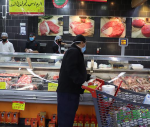You are here
The complex reality of Gaza and regional security
Jun 10,2024 - Last updated at Jun 10,2024
The complexity of the situation on the ground might require a more decisive approach to end the war in Gaza. A diplomatic approach may prove ineffective while multiple fronts remain active and conflicts are ongoing.
After more than eight months of conflict, it is clear that Israel is unwilling to compromise on security, which includes controlling borders and eliminating any armed forces in Gaza. Even the American proposal underscores the necessity of preventing a recurrence of incidents like that of October 7, which can only be achieved with the elimination of any military capacity in Gaza.
For Hamas, this presents no tangible benefits, as they seek guarantees that any agreement will end the war, restrict Israel’s ability to resume hostilities and ensure Hamas’s role in post-war Gaza. Meanwhile, Israeli Prime Minister Netanyahu insists that neither Hamas nor Fateh will govern Gaza after the conflict. The issue of hostages remains a crucial bargaining chip for Hamas in these negotiations, even with reports suggesting that many hostages may no longer be alive.
Despite increased efforts to end the war in Gaza, the open fronts Israel faces complicate the conflict’s resolution. The war began with the objective of securing Israel, focusing initially on Gaza. However, the West Bank, the Golan Heights and particularly Lebanon are geographic areas that Israel considers essential to secure under the same premise. Thus, de-escalating the war in Gaza or reaching an agreement on post-border control may not resolve the broader regional instability.
Indeed, concluding hostilities in Gaza could lead to the emergence of another conflict front, notably in Lebanon, which has become a priority for Israel. The Israeli government aims to secure the northern regions, facilitate the return of residents before the school year, and restore normalcy. The recent escalation along the borders between Israel and Hizbollah highlights the urgency of finding a resolution. A failure in diplomatic efforts could precipitate a broader confrontation between the two parties.
The challenges in resolving these ongoing conflicts could easily shift the struggle to other fronts. The unity of fronts promoted by Iran’s axis in recent years is now being tested through these confrontations. While dismantling the instability, piece by piece, is critical, starting with Gaza, the situation in Lebanon is equally pressing at this juncture. Unfortunately, the confrontation level between Israel and Hizbollah is rising, suggesting a potential for significant escalation.
The opportunity to construct a solution is constrained by several factors, including the limited time remaining for the current American administration and its capacity for political manoeuvring in the Middle East. Consequently, the likelihood of a new front emerging may be greater than the capacity to implement a regional settlement plan.












Add new comment